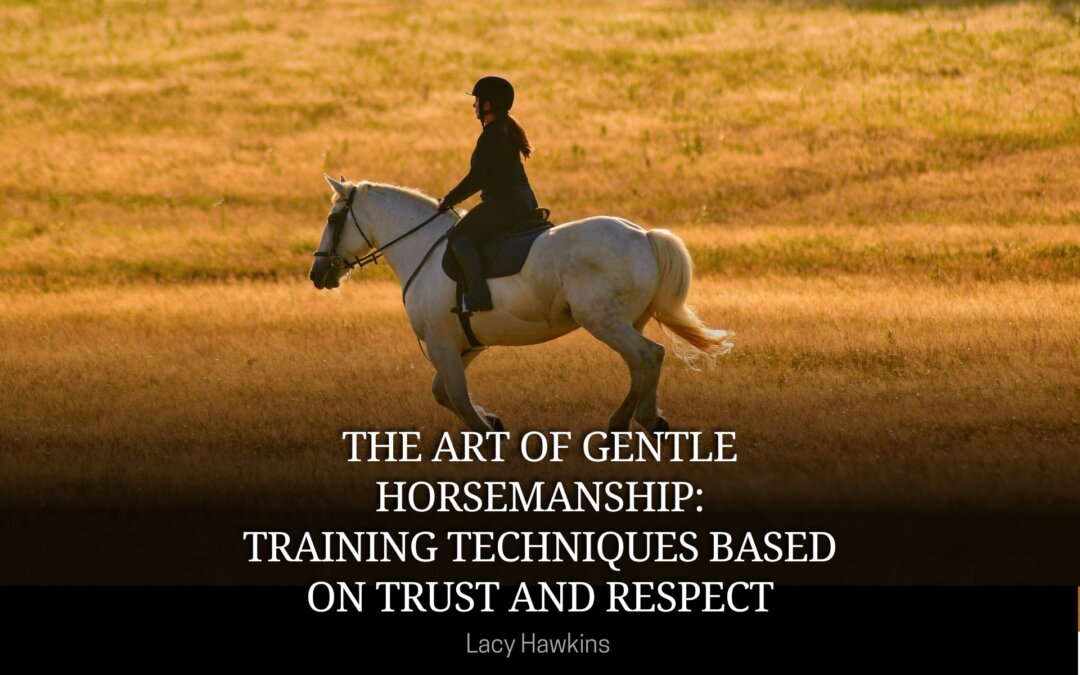Much like any relationship, horsemanship is built on a foundation of trust, communication, and respect. In recent years, gentle horsemanship has gained popularity as a holistic approach to training horses that emphasizes the horse’s well-being, emotional connection, and partnership with the rider. This approach contrasts with traditional training methods that may rely on force or dominance.
Understanding Gentle Horsemanship
Gentle horsemanship is a philosophy that prioritizes the physical, mental, and emotional well-being of the horse throughout the training process. It recognizes that horses are sentient beings capable of forming strong bonds with humans and experiencing a range of emotions. The goal of gentle horsemanship is to build a partnership based on mutual understanding, clear communication, and positive reinforcement.
Training Techniques Based on Trust and Respect
Clear Communication: Gentle horsemanship emphasizes clear and consistent communication between horse and rider. This involves using subtle cues, body language, and voice commands to convey your intentions to the horse. The goal is establishing a language you and the horse can understand, fostering a harmonious connection.
Positive Reinforcement: Reward-based training is a crucial component of gentle horsemanship. When the horse responds correctly to a cue or command, it is rewarded with praise, pats, or treats. This positive reinforcement encourages the horse to associate desired behaviors with positive outcomes, making learning a more enjoyable experience.
Building Trust: Building trust is fundamental in gentle horsemanship. It involves spending time with the horse, grooming it, and engaging in non-riding activities to create a bond. Introducing new experiences and challenges helps the horse build confidence and trust in the rider’s guidance.
Listening to the Horse: Gentle horsemanship encourages riders to listen to their horses and be attuned to their needs and emotions. Recognizing signs of stress, discomfort, or anxiety allows the rider to adjust their approach and ensure the horse’s well-being.
Desensitization: Gentle horsemanship often involves desensitization exercises to familiarize the horse with potentially frightening stimuli, such as tarps, flags, or water. This process is conducted gradually and at the horse’s pace, helping the horse overcome fears through positive experiences.
Empathy and Patience: Patience is a cornerstone of gentle horsemanship. It acknowledges that each horse learns at its own pace and may have unique challenges. Approaching training with empathy and understanding creates a supportive environment for both horse and rider.
Freedom of Choice: Gentle horsemanship allows the horse to have a degree of autonomy within the training process. This may involve giving the horse opportunities to make choices and express preferences, enhancing the horse’s sense of agency and reducing feelings of coercion.
Riding with Softness: Gentle horsemanship encourages riders to use light and gentle aids, such as soft rein contact and minimal leg pressure. This promotes relaxation and enables the horse to respond willingly to subtle cues.
Gentle horsemanship is a holistic approach to training that prioritizes the horse’s well-being, emotional connection, and partnership with the rider. By using clear communication, positive reinforcement, and empathy, riders can build trust and respect with their horses, creating a harmonious and enjoyable training experience. Through gentle horsemanship, riders can forge strong bonds with their equine partners and better understand these magnificent animals.
